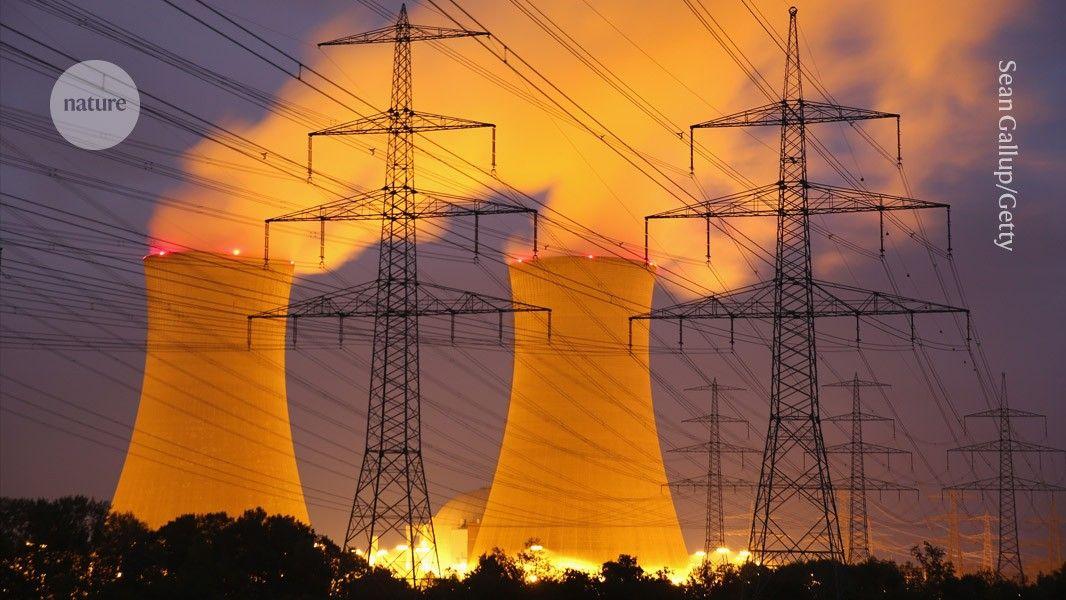IEA Launches Energy and AI Observatory to Track AI's Global Energy Impact
2 Sources
2 Sources
[1]
Interactive IEA tracker shows AI's global energy footprint
Observatory maps datacenter hubs and power demand worldwide The International Energy Agency (IEA) has unveiled an online platform to closely monitor and analyze the impact of AI across the energy sector worldwide. The Energy and AI Observatory sports interactive tools to explore datacenter electricity consumption and the scale of digital infrastructure by region, and provides case studies to illustrate how AI is being deployed across the energy sector itself, as well as its effects. It follows the publication earlier this year of a report from the IEA estimating that energy consumed by bit barns worldwide is set to more than double by 2030, surpassing that currently used by all of Japan. AI is the driver of most of this; the energy required by "AI-optimized" datacenters is projected to outpace the rest and more than quadruple by the end of the decade. However, the same report also claimed that AI is already being deployed in the energy industry to optimize systems, minimize greenhouse gas emissions, and cut costs. Divided into two main sections, the Observatory features an interactive map showing the locations of datacenter hubs and their capacity - both operating and planned - alongside major telecoms and high voltage distribution cable networks. It notes that gigawatt-scale clusters have emerged in specific regions of North America, Europe, and Asia-Pacific, thanks to large-scale investment in the infrastructure that is used used in the development and training of AI models. Other charts show the total global installed bit barn capacity, illustrating how it has accelerated in recent years (doubling since 2020), the installed capacity by region (spoiler: the US is by far the largest), and datacenter capacity as a share of regional energy demand. Meanwhile, the "AI for energy" section details use cases such as energy price forecasting using AI tools; AI-driven models for electricity access forecasting; and building-level electricity planning using AI models. According to the IEA, the Observatory was first announced by executive director Fatih Birol at the AI Action Summit held in Paris in February, and aims to inform national and international policy on energy and AI topics, including ongoing dialog between government and industry. "The IEA is at the forefront of efforts to understand and manage the significant links between energy and artificial intelligence, which is quickly emerging as one of the most important technologies of our time," said Birol. He added that the Observatory would support decision-makers around the world in planning for the future, stressing the importance of reliable data and analysis in such a fast-moving sector. An earlier IEA report also warned that the world is going to need a lot more electricity generation capacity within the next three years to keep up with an unprecedented spike in demand, though it isn't just AI and datacenters to blame. Increasing use of air conditioning, heat pumps, the electrification of industrial processes and electric vehicles are all taking their toll as well. ®
[2]
IEA's New Energy and AI Observatory to Monitor AI's Impact on Global Energy Systems | AIM
Currently, case studies from the observatory show how AI is already cutting emissions and improving energy efficiency across industries. As the rise of AI increases demand for data centres, it places significant pressure on energy systems while also enabling new efficiencies. The International Energy Agency (IEA) has launched a new Energy and AI Observatory, aiming to analyse the growing interconnections between the AI and energy systems and address the challenges. The platform is equipped with tools to understand datasets on data centre electricity consumption and digital infrastructure by region. "Building on our recent major report on this subject, this new Energy and AI Observatory, developed in consultation with a wide range of partners, underscores our commitment to supporting decision makers around the world as they plan for the future. Reliable data and analysis are the cornerstone of navigating this fast-moving space," Fatih Birol, executive director of the IEA, said. The observatory was initially announced in February at the AI Action Summit. In April, an IEA publication titled Energy and AI highlighted that electricity demand from AI-optimised data centres is projected to more than quadruple by 2030. Given the uncertainty around how this demand will evolve, the report calls for a scenario-based approach to guide timelines and decisions across the energy sector. Currently, 20 case studies in the observatory feature how AI is deployed across the energy sector. They explore a wide spectrum of AI applications, from optimising heating and cooling systems to improving industrial gas use, increasing waste heat recovery, and enhancing grid and renewable energy efficiency. One of them concerns the Infosys-owned and operated smart campus in Pune. Even before adopting AI, the campus had an energy performance index (EPI) of 70, far below the Indian benchmark of 180 for energy-efficient buildings. With AI and machine learning, Infosys further optimised operations by predicting demand and automating energy use. In six months, energy efficiency improved by 7%, on-site generation rose by 5%, and carbon emissions fell by 7,900 tonnes. These case studies signal how AI can help balance rising energy demand with sustainability, making the observatory a key tool for future energy planning.
Share
Share
Copy Link
The International Energy Agency (IEA) has introduced an online platform called the Energy and AI Observatory to monitor and analyze AI's impact on the global energy sector, providing interactive tools and case studies.
IEA Unveils Energy and AI Observatory
The International Energy Agency (IEA) has launched an innovative online platform called the Energy and AI Observatory, designed to monitor and analyze the growing impact of artificial intelligence on the global energy sector
1
2
. This initiative, announced by IEA Executive Director Fatih Birol at the AI Action Summit in Paris this February, aims to provide policymakers and industry leaders with crucial insights into the intersection of AI and energy systems1
.Interactive Tools and Data Visualization
The Observatory features a range of interactive tools that allow users to explore and understand complex datasets. A key component is an interactive map displaying the locations of datacenter hubs worldwide, along with their operating and planned capacities
1
. This visualization is complemented by major telecoms and high-voltage distribution cable networks, offering a comprehensive view of the digital infrastructure landscape.
Source: The Register
Other charts within the platform illustrate:
- Global installed datacenter capacity, which has doubled since 2020
- Installed capacity by region, with the US leading significantly
- Datacenter capacity as a share of regional energy demand
1
AI's Impact on Energy Consumption
The IEA's recent report, highlighted in the Observatory, projects a significant increase in energy consumption due to AI-driven technologies. Key findings include:
- Global datacenter electricity consumption is expected to more than double by 2030
- Energy demand from AI-optimized datacenters is projected to quadruple by the end of the decade
- This surge in demand could surpass the current electricity usage of Japan
1
2
AI Applications in the Energy Sector
The Observatory's "AI for energy" section showcases 20 case studies demonstrating how AI is being deployed across various energy-related applications
2
. These include:- Energy price forecasting using AI tools
- AI-driven models for electricity access forecasting
- Building-level electricity planning using AI models
- Optimization of heating and cooling systems
- Improvements in industrial gas use and waste heat recovery
- Enhancements in grid and renewable energy efficiency
1
2
Related Stories
Case Study: Infosys Smart Campus in Pune
One notable case study featured in the Observatory is the Infosys-owned and operated smart campus in Pune, India. This example illustrates the potential of AI in improving energy efficiency:
- The campus initially had an energy performance index (EPI) of 70, significantly below the Indian benchmark of 180 for energy-efficient buildings
- After implementing AI and machine learning:
- Energy efficiency improved by 7%
- On-site generation increased by 5%
- Carbon emissions reduced by 7,900 tonnes over six months
2
Future Implications and Policy Support
The Energy and AI Observatory is positioned as a crucial tool for informing national and international policy on energy and AI topics. It aims to support ongoing dialogue between government and industry stakeholders
1
. As Fatih Birol emphasized, "Reliable data and analysis are the cornerstone of navigating this fast-moving space"2
.The platform's launch comes at a critical time, as the world faces unprecedented growth in electricity demand. While AI and datacenters contribute significantly to this increase, other factors such as increased use of air conditioning, heat pumps, industrial electrification, and electric vehicles also play substantial roles
1
.As AI continues to reshape the energy landscape, the IEA's Energy and AI Observatory stands as a vital resource for understanding and managing the complex interplay between technological advancement and sustainable energy practices.
References
Summarized by
Navi
[1]
Related Stories
AI-Driven Data Center Energy Consumption Set to Double by 2030, Raising Climate Concerns
11 Apr 2025•Technology

AI's Energy Paradox: How Data Centers Are Reshaping Global Power Demand and Climate Goals
18 Nov 2025•Technology

AI's Surging Energy Demands Pose Challenges and Opportunities for Power Grids
27 Jun 2025•Technology
Recent Highlights
1
Google launches Gemini 3 Flash as default AI model, delivering speed with Pro-grade reasoning
Technology

2
OpenAI launches GPT Image 1.5 as AI image generator war with Google intensifies
Technology

3
OpenAI launches ChatGPT app store, opening doors for third-party developers to build AI-powered apps
Technology






